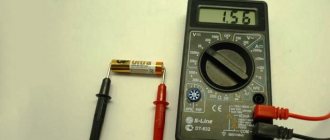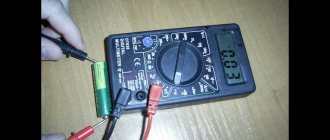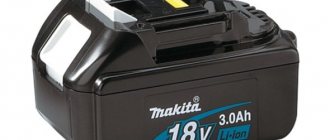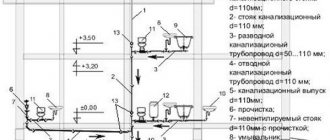Low temperatures at night force motorists to remove old batteries from their cars and take them home to keep them warm for the night. How harmful is an acid battery for households?
The design of the battery is quite complex and requires careful handling. It contains a complex system of lead plates of the cathode and anode with cells of different polarities, divided into several blocks. The battery contains an electrolyte based on an aqueous solution of sulfuric acid, which conducts electric current. If you drop a heavy battery or hit it hard against something hard, negative processes may begin inside it.
Areas of damaged plates short out, an arc-shaped discharge appears, increasing the temperature, resulting in hotspots of overheating. In general, the battery will rapidly lose some of its charge. Therefore, daily carrying of the battery from where the car is parked to the house is in itself unsafe for the battery.
Do I need to recharge the battery before the onset of frost? More details
Where to charge the battery?
In addition, replenishing a battery with an electrical charge is not an easy process; it must be done only in specially prepared rooms. A bedroom, children's playroom, kitchen with food or a toilet are not suitable for this.
When charging a battery, at least 60 different reactions occur, including those without the participation of an electrolyte. During the discharge, lead dioxide is reduced at the cathode and lead is oxidized at the anode. When charging, reverse reactions occur. In rare cases, on old plates covered with plaque, electrolysis of water begins and oxygen is released on the positive electrode (anode), and hydrogen is released on the negative electrode (cathode), which mixes with air and in a ratio of 1:4 - 1:7, an explosive gas is obtained. This is an explosive substance that is highly flammable.
Question answer
How to choose a car battery?
The older the battery, the greater the likelihood of hazardous fumes. Gas accumulates in the battery case, and then seeps through the holes under the terminals and comes out. The gas comes out not alone, but together with electrolyte vapors that settle outside. Therefore, if the top of the battery is covered with a white residue on the terminals, then it is absolutely forbidden to charge it at home.
When smoking, passing a cigarette may cause gas to ignite. In addition, improper use of the charger creates the risk of sparks jumping between the wire fastenings and terminals. For this reason, battery fires most often occur.
It happens that one of the battery cans with accumulated detonating gas may burst from a slight explosion. Then the acid solution can get on a person or objects around. You can protect yourself from it using a solution of soda and water, which neutralizes the acid and saves the skin from severe burns.
Therefore, in order to protect yourself during forced charging of the battery, you must follow safety precautions and disconnect the charger from the power source before removing the cable from the terminals. Smoking and using open fire near the battery is not allowed. It is recommended to charge the battery in a non-residential, cool room with good ventilation and, preferably, fire protection.
Is it possible to “light” a car from a truck? More details
Danger and possible consequences
Charging a battery at home is dangerous. Let's take a closer look at what risks exist.
Nowadays you can find videos on the Internet showing a battery exploding. The most common type of battery that explodes is lead-acid. To avoid this, you need to understand why this happens.
The electrolyte in the battery is sulfuric acid diluted with distilled water. If you continue to charge the battery after it is charged, the liquid in the battery will begin to boil. This releases hydrogen and oxygen. This mixture is called "explosive gas" and can explode from an open flame or even a small spark. To avoid an explosion, you need to monitor the charging process and prevent the electrolyte from boiling.
Hydrogen explosion when charging a car battery.
When charging, various chemicals are released. The most harmful of them are sulfur dioxide (SO2) or, as it is also called, sulfur dioxide. Poisoning with this substance causes dizziness, nausea, and weakness. At the first symptoms of intoxication, you should leave the premises. Sulfur dioxide can also accumulate on the surface of walls, furniture and other things. Therefore, it can poison everyone who lives in this apartment.
The electrolyte contains sulfuric acid, so servicing and charging the battery is dangerous. If the solution gets on the skin, it will burn; if it gets into the eyes, serious vision problems may occur. When charging a battery being serviced, the caps of the cans must be kept open. Therefore, when the electrolyte boils, its splashes will scatter and can be very dangerous both for people and for things nearby.
Where should I store the battery?
It is also dangerous to store batteries at home for a long time. During idle time, chemical reactions inside the case continue. Sulfuric acid evaporates, sulfatization occurs at the electrodes with the release of detonating gas. This process is enhanced by direct sunlight. Therefore, storing the battery on a windowsill or balcony is also not recommended.
You should not leave the battery near heat sources in the apartment. The heating radiator must be no closer than 1 meter, otherwise the chemical reactions inside the battery will intensify.
If you need to leave the battery for several months without using it, you must first fully charge it. The charge will remain for 12 months, after which a new recharge will be required. If this is not done, the process of lead sulfation in a discharged battery may intensify. You cannot drain the electrolyte, as the battery capacity will sharply decrease.
New batteries should be stored in a dark and well-ventilated non-residential area at a temperature of 0-10 degrees.
Which batteries are safe?
Now there are two safe technologies that do not emit any fumes, these are AGM and GEL . These batteries have an electrolyte in one case - locked in glass mats, it cannot come out in any way, in another case - it is in a gel, that is, it also cannot evaporate, boil, etc. They can be easily charged at home - they are even recommended for alternative energy supply systems, because they are safe and environmentally friendly. Both of these technologies can be easily applied in cars, although they are expensive.
In conclusion, I still want to show a way out - I used to park my car in a parking lot that was far from home. The battery was half dead, so it had to be charged often. I personally did exercises at the security guardhouse, and they easily allowed it.
You can also light the battery, and it will then be charged from the car's generator.
Well, if your battery constantly gives you problems, then you need to think about choosing a new one! Or check the car for leaks.
I’ll finish this, read our AUTOBLOG.
(
17 votes, average: 4.53 out of 5)
Similar news
Gel or acid battery. Which is better? Only facts + V.
Battery bank. What it is? How many are there? What is the voltage
Batteries “Europe” and “Asia” - what are they? How to determine and what they are.
Is it possible to charge a car battery at home?
In the life of every car owner, a situation arises when the battery needs to be charged. It doesn’t matter whether it’s winter or summer, it always turns out to be inappropriate. The question arises, where is the best place to charge? You can use special services or do it yourself in the garage. But if the service is already closed and there is no garage, can the battery be charged at home? Is it dangerous for people and pets? What are the nuances when charging at home? What you need to know in order to safely and correctly charge your battery at home - we’ll look at it in detail in this article.
Need to recharge the battery
When using a car in winter, the car is used less often than in warm weather; it can sit for a long time in a cold garage or simply on the street. After a long period of inactivity, the charge level may drop to a critical level, which can lead to undesirable consequences. The battery simply will not crank the starter and the engine will not start. But it can be worse.
The electrolyte must have a certain density to prevent freezing. Wear and depletion of the battery can cause the electrolyte's density to drop, allowing it to freeze. And this will lead to expansion of the electrolyte in volume, damage to the battery case and its complete failure. Therefore, it is very important to constantly keep it charged, regardless of whether the car is running or parked in the garage.
Instructions for charging the battery
How to charge your battery yourself:
- First, you need to remove the battery from the car; to do this, unscrew the nuts on the connected terminals and disconnect them, and then unscrew the nut of the bar or bracket that secures the battery.
- After dismantling, check the housing for damage. If there are cracks, the battery cannot be used, since such damage contributes to electrolyte leakage. This battery must be disposed of. Also check the liquid level in the jars, since there must be enough electrolyte in the device, otherwise it will quickly boil and evaporate. If necessary, distillate can be added to the jars.
- Clean the terminals from oxidation and dirt, this will ensure more efficient connections and voltage supply to the terminals.
- Unscrew the caps located on the battery sections, but do not remove them completely. This will prevent the device from swelling if the electrolyte evaporates.
- As we have already said, charging the battery at home is not recommended, but if there are no other options, then you will have to perform this task at home. You can charge the device using one of several methods. Connect the charger to the battery and set the voltage on it to 14 to 16 volts, only after that the charging device can be connected to the network. The parameter value should be about 10% of the total battery capacity. The current will decrease during charging, and when the battery is fully charged, the pointer on the ammeter will drop to zero. If the battery has not been used for a long time, then you will need to completely discharge it, for example, through a light bulb, and then repeat the charging procedure again. To use a light bulb to discharge a device, solder two wires to it, one of which is connected to the minus, and the other to the plus.
- There is another way, it is completely opposite. In this case, a constant current is used, without decreasing, and only the voltage will change. The method is complex in practice, since its implementation requires certain knowledge from the car enthusiast. At the very beginning, you should set the current value on the device, which corresponds to 10% of the full battery capacity. With this connection, the battery should be kept connected to the charger until the voltage level on it reaches 14 volts. When this happens, the current parameter will need to be reduced by 50%, that is, by half, and then wait until the voltage increases to 15 V. Then the current again needs to be reduced by another factor. The procedure can be considered complete when the voltage in the battery remains at the same level and does not increase.
- Then you need to disconnect the charger from the network and disconnect its terminals from the battery terminals, then again check the volume of liquid in the cans and, if necessary, add electrolyte to the system.
Best place to charge
To begin with, we recommend that you familiarize yourself with the factors that determine the charge of a car battery:
- The charging process itself can be performed without removing the battery from the car if you own a garage that has charging conditions. This refers to the supplied electricity and heating of the room when it comes to charging in winter. For greater convenience, the battery can be removed.
- The room in which the task is performed must be ventilated. It is warm and the air humidity is not high.
- There are no easily flammable objects or things near the charging place.
Before charging, the battery must be cleaned and dirt and oxidation removed from its terminals. It is better to use functional chargers that can control the parameters. After reading the recommendations, you will have a logical question - is it possible to charge the battery at home (author - HF Autoelectrics channel)?
Why can't you charge your car battery at home?
Low temperatures at night force motorists to remove old batteries from their cars and take them home to keep them warm for the night. How harmful is an acid battery for households?
The design of the battery is quite complex and requires careful handling. It contains a complex system of lead plates of the cathode and anode with cells of different polarities, divided into several blocks. The battery contains an electrolyte based on an aqueous solution of sulfuric acid, which conducts electric current. If you drop a heavy battery or hit it hard against something hard, negative processes may begin inside it.
Areas of damaged plates short out, an arc-shaped discharge appears, increasing the temperature, resulting in hotspots of overheating. In general, the battery will rapidly lose some of its charge. Therefore, daily carrying of the battery from where the car is parked to the house is in itself unsafe for the battery.
How to properly charge the battery
Depending on the condition of the battery, it requires some attention. The battery must be recharged in time when the generator cannot cope with the load or when there is a strong loss of charging current. Not to mention the self-discharge current, which inevitably drains the battery. even when idle.
In these cases, additional recharging is necessary. If you do not charge in time, this can lead to complete failure of the battery, shedding of the plates and short circuit of the cans. After this, in most cases, restoration of performance is no longer possible. This is especially true during winter operation.











